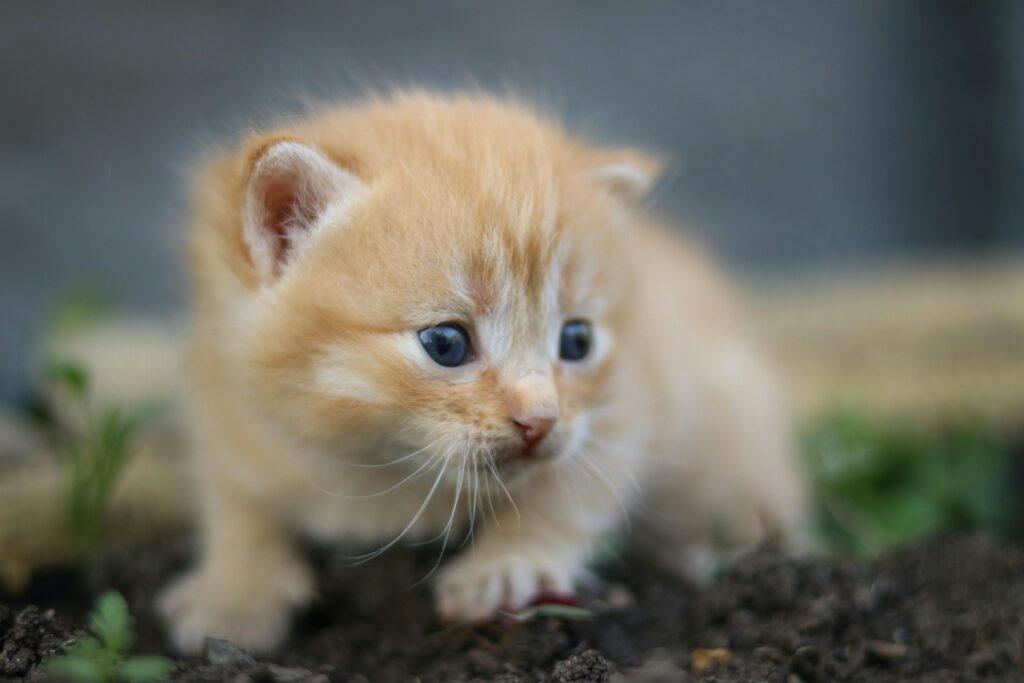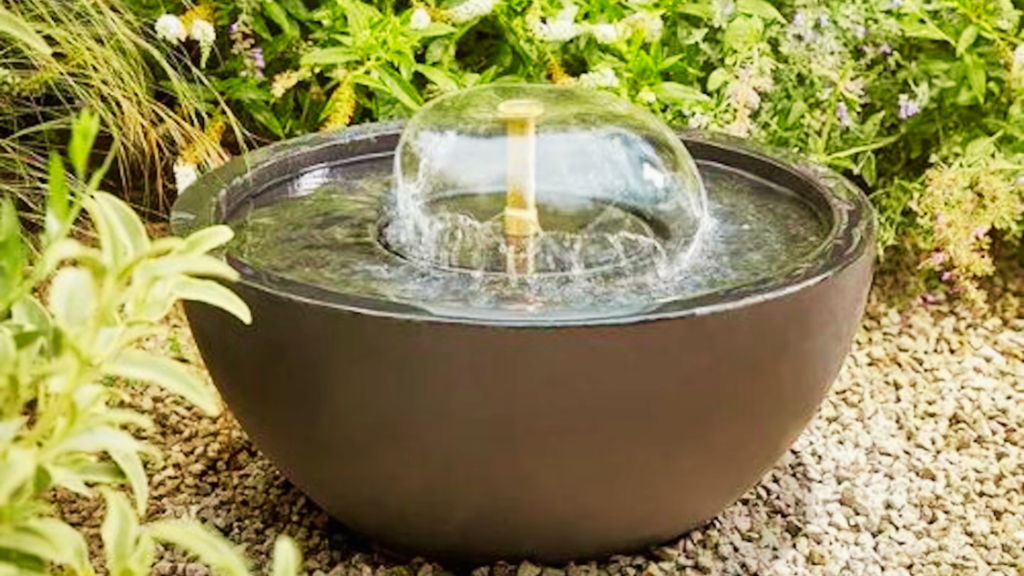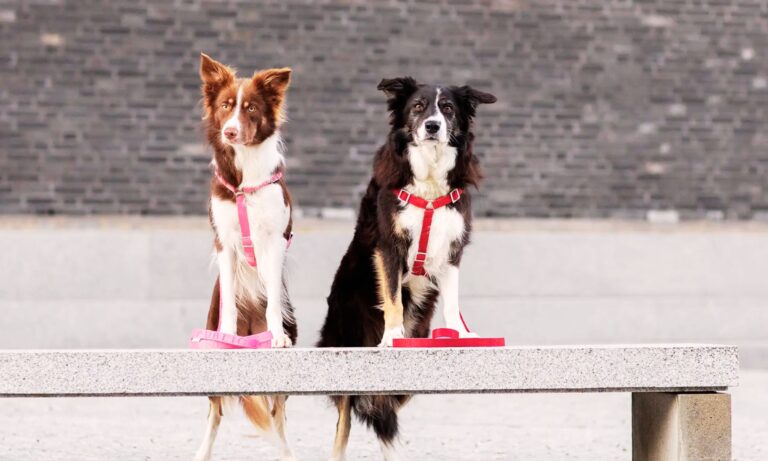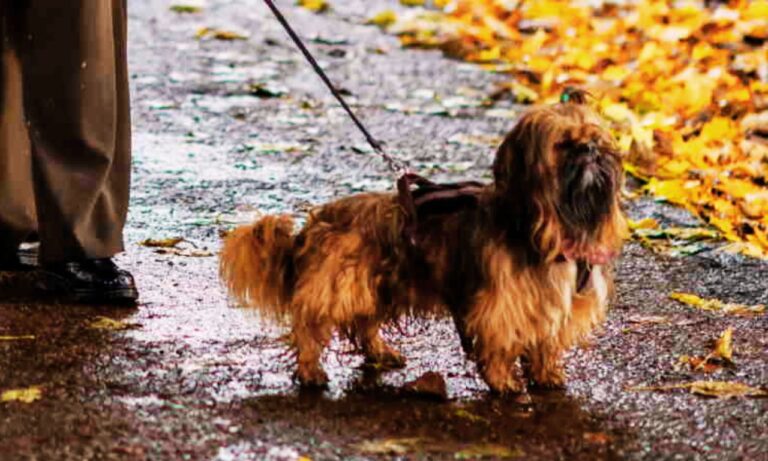| Summary: Kittens can eat dry food only once they are fully weaned, typically around 8-10 weeks old. However, a mix of wet and dry food is recommended until 12 weeks to ensure proper hydration and nutrition. Gradually transition to dry food by softening kibble with water before feeding fully dry meals. |
Kittens grow and develop rapidly in their first few months of life, requiring a well-balanced and nutrient-rich diet to support their energy levels, immune system, and overall health. One common question among cat owners is: when can kittens eat dry food only? While dry food is a convenient and cost-effective option, kittens have unique dietary needs that must be met to ensure their proper growth. Ensure your Newfoundland’s comfort and security with expert tips on how to ensure a safe collar fit for Newfoundland.
I’ll explore when kittens can transition to dry food, the benefits and drawbacks of a dry food diet, and tips for making the switch.
Blog Highlights
ToggleFAQs: When Can Kittens Eat Dry Food Only?
| Question | Answer |
| At what age can kittens eat dry food only? | Around 12 weeks old, but wet food is still recommended for hydration. |
| Can a 6-week-old kitten eat dry food? | Not entirely. Dry food should be softened with water or formula at this stage. |
| How do I transition my kitten to dry food? | Gradually mix dry food with wet food over 7-10 days, reducing moisture over time. |
| Do kittens need more wet or dry food? | A mix is best. Wet food provides hydration, while dry food offers convenience. |
| What is the best dry food for kittens? | Choose a high-protein, grain-free kitten formula with real meat as the first ingredient. |
| How can I make sure my kitten stays hydrated? | Provide fresh water at all times or use a pet water fountain. |
The Early Weeks: A Kitten’s Dietary Needs
Before introducing dry food, it’s crucial to understand what kittens need in their early weeks of life.
Newborn to 4 Weeks: Mother’s Milk or Formula
- Primary Food Source: Kittens rely on their mother’s milk for essential nutrients, including proteins, fats, and antibodies to build a strong immune system.
- Bottle-Feeding Orphans: If a kitten is orphaned or separated from its mother, a kitten milk replacer (KMR) is necessary. Cow’s milk is not suitable as it lacks essential nutrients and can cause digestive issues.
- Feeding Frequency: Newborn kittens need feeding every 2-3 hours, including during the night.

4 to 5 Weeks: Introducing Solid Foods
At around 4 weeks, kittens begin showing interest in solid food. This is the weaning stage, where they transition from milk to solid food. Discover the ideal fit by learning what size collar for Newfoundland dog to ensure your pet’s comfort and safety.
- First Step: Start with soft, wet kitten food or a gruel mixture (wet food mixed with water or kitten formula).
- Dry Food Introduction: At this stage, dry kibble should be soaked in warm water or kitten milk replacer to soften it for easy chewing.
- Feeding Frequency: 4-5 times a day, as their small stomachs require frequent meals.
When Can Kittens Eat Dry Food Only?
6 to 8 Weeks: Gradual Transition to Dry Food
Between 6 to 8 weeks, kittens can start eating dry food, but they still need a mix of wet and dry food to ensure proper hydration and nutrition.
- How to Transition: Gradually reduce the amount of water added to dry kibble, making it less mushy over time.
- Monitor Chewing Ability: Some kittens take longer to adjust to dry kibble, so always observe if they can chew properly.
- Hydration: Since dry food contains only 10% moisture, ensure fresh water is always available.
10 to 12 Weeks: Majority Dry Food Diet
By 10 to 12 weeks, most kittens can handle dry food well and get most of their nutrition from it. However, incorporating some wet food can help with hydration and variety.
12 Weeks and Beyond: Dry Food Only?
At 12 weeks (3 months) and older, kittens can technically eat dry food only, but should they?
- Nutritional Balance: Dry food alone may not provide enough moisture, which is crucial for urinary and kidney health.
- Vet Recommendations: Many veterinarians recommend continuing wet food as part of the diet to support hydration and digestion.
- Personalized Needs: If your kitten prefers dry food, choose high-quality kitten kibble rich in animal protein, healthy fats, and essential vitamins.

Benefits of Feeding Kittens Dry Food
Dry food offers several benefits, making it a popular choice among cat owners.
1. Convenience and Long Shelf Life
- Dry food doesn’t spoil quickly like wet food and can be left out for kittens to graze throughout the day.
- It’s easy to store and doesn’t require refrigeration.
2. Supports Dental Health
- Crunchy kibble helps scrape off plaque from a kitten’s teeth, reducing the risk of dental disease.
- Some dry foods are specifically formulated to promote dental hygiene.

3. Cost-Effective Option
- Compared to wet food, dry kibble is more affordable per serving.
- Larger bags of high-quality kitten kibble can last for weeks, making it budget-friendly.
For expert tips on how to fit a collar on a Belgian Shepherd, this guide offers simple steps to ensure your dog’s collar fits securely and comfortably.
Potential Downsides of a Dry Food-Only Diet
While dry food has advantages, it also comes with concerns.
1. Low Moisture Content
- Kittens need adequate hydration for kidney and urinary health.
- Since dry food contains only about 10% moisture, compared to wet food’s 70-80%, there is a higher risk of dehydration.
2. Potential for Overeating and Obesity
- Dry food is calorie-dense, and free-feeding can lead to overeating.
- Obesity in kittens can lead to long-term health issues such as diabetes and joint problems.
3. Digestive Sensitivity
- Some kittens may have trouble digesting dry food, leading to constipation or upset stomach.
- Wet food can be easier on sensitive stomachs.
How to Successfully Transition Kittens to Dry Food
If you decide to switch your kitten to dry food, follow these steps to ensure a smooth transition.
Step 1: Start with a Mix
- Begin by mixing dry food with wet food to encourage interest and acceptance.
- Slowly increase the ratio of dry food while decreasing the wet food over 7-10 days.
Step 2: Gradually Reduce Moisture
- If your kitten struggles with dry kibble, continue softening it with warm water.
- Reduce water over time to help them adjust.
Step 3: Ensure Hydration
- Provide fresh water at all times to compensate for the low moisture in dry food.
- Some kittens prefer drinking from a cat fountain rather than a bowl.

Step 4: Choose a High-Quality Kitten Food
- Look for a dry food brand with real meat as the first ingredient, no artificial preservatives, and essential nutrients like taurine and omega fatty acids.
Step 5: Monitor Their Health
- Watch for signs of dehydration, such as dry gums or lethargy.
- Consult your vet if your kitten has trouble eating or shows digestive discomfort.
Should Kittens Eat Dry Food Only? Final Thoughts
While kittens can eat dry food only from around 12 weeks old, it’s not always the best option. Here’s a quick breakdown:
| Factor | Wet Food | Dry Food |
| Hydration | High moisture (70-80%) | Low moisture (10-12%) |
| Dental Health | Less beneficial | Helps reduce plaque |
| Convenience | Requires refrigeration | Easy to store and serve |
| Cost | More expensive | More budget-friendly |
| Nutrient Density | High protein and fat | High in calories, but may contain fillers |
For optimal health, a combination of both wet and dry food is recommended. If feeding dry food only, ensure your kitten is getting proper hydration and high-quality kibble with all essential nutrients. For detailed guidance on selecting the correct collar size for a Belgian Shepherd, this article provides essential tips to ensure your dog’s comfort and safety.
How to Successfully Transition Kittens to Dry Food
Transitioning kittens to dry food is a gradual process that requires patience and careful planning. Abrupt changes in diet can cause digestive issues, so it’s essential to make the switch over time while ensuring your kitten gets all the necessary nutrients. Here’s a step-by-step guide to help kittens adjust to dry food successfully.

Step 1: Start with a Mix of Wet and Dry Food
When transitioning from wet to dry food, the best approach is to start with a combination of both. Mixing dry kibble with wet food makes the transition smoother by keeping the food palatable and easy to chew. Begin with a 75% wet food and 25% dry food ratio, ensuring the kitten is still getting sufficient moisture. Over the next 7-10 days, gradually increase the dry food proportion while reducing the wet food.
If your kitten seems hesitant to eat the dry food, try crushing the kibble slightly and mixing it well with the wet food to make it easier to chew. Some kittens may take longer to adjust than others, so observe their eating habits and make adjustments accordingly.
Step 2: Gradually Reduce Moisture in Dry Food
Many kittens struggle with chewing dry kibble initially, especially if they are used to softer textures. To ease the transition, moisten dry food by adding warm water or kitten formula to soften it. Let the kibble soak for 5-10 minutes before serving, creating a mushy consistency that mimics wet food.
As your kitten gets used to the texture, slowly decrease the added moisture over several days until they are comfortable eating fully dry kibble. This method prevents a sudden texture change, making the transition much smoother.
Step 3: Ensure Hydration and Fresh Water Availability
One of the biggest concerns with a dry food-only diet is dehydration. Since dry kibble contains only about 10% moisture, compared to wet food’s 70-80%, ensuring your kitten has constant access to fresh water is crucial.
Tips for encouraging hydration:
- Use a water fountain: Many kittens prefer running water over stagnant water in a bowl. A pet water fountain can encourage them to drink more.
- Place multiple water bowls around the house: Having easy access to water in different locations can remind your kitten to drink more often.
- Try flavored water additives: Some pet stores offer cat-safe water enhancers to make drinking more appealing.
If your kitten is not drinking enough water, consider keeping some wet food in their diet to maintain hydration levels.
Step 4: Choose a High-Quality Dry Food
Not all dry cat foods are created equal. Some brands use excessive fillers, artificial ingredients, or low-quality protein sources. When selecting a dry food for your kitten, look for:
✔ High-quality animal protein (chicken, turkey, salmon) as the first ingredient
✔ Essential nutrients like taurine, omega fatty acids, and vitamins
✔ No artificial preservatives or excessive carbohydrates
Feeding high-quality dry food ensures your kitten receives the necessary nutrients for proper growth and development. Discover the perfect collar size for an Anatolian Shepherd Dog to ensure comfort and security for your furry friend.
Final Words
Kittens can start eating dry food at 6 to 8 weeks old, but they should continue having wet food until at least 12 weeks to ensure proper hydration. While dry food is convenient and beneficial for dental health, it lacks the moisture content needed for optimal feline health. Hope so, now you know when can kittens eat dry food only.
To support your kitten’s growth and well-being, consider a balanced approach with both wet and dry food. Always monitor their eating habits, hydration levels, and overall health, and consult your veterinarian for the best dietary plan tailored to your kitten’s needs. Learn more about the unique double-layered coat of an Anatolian Shepherd and how to care for it effectively.





